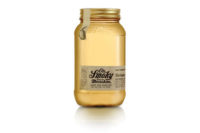Adding Alcohol

According to statistics from the U.S. Census Bureau's "Annual Retail Trade Survey," beer, wine and liquor stores accounted for $40.8 billion in sales in 2009, a significant increase from the $26.6 billion registered in 1999. Drinking establishments, which admittedly could include coffeehouses and other non-alcoholic options, saw $20 billion in 2009 sales, also a sizable increase from 1999, which recorded $14.6 billion. Speaking of coffeehouses, one of the nation’s largest coffee chains has announced plans to bring more-adult beverages to its customers.
For almost two years, Starbucks has been testing the alcohol concept in stores in Seattle and Portland, where, after 4:00 p.m., the menu expands to include the beverages. Those six test stores have seen double-digit sales jumps, and the company has announced plans to add beer and wine to its menus in the Chicago area by the end of 2012, where the stores will also offer food options, such as cured meats and other small plates, to accompany the alcoholic beverages. The coffee chain is far from alone, however, in plans to expand into alcoholic beverages; both Burger King and White Castle are experimenting with the notion, the former offering beer at select Whopper Bar locations, while the latter is offering beer and wine at its Blaze Modern BBQ concepts.
Any notions of taking wine and beer sales nationwide, however, will have to bear in mind state and local regulations. Texas, for instance, just saw its state restrictions on alcohol beverage sales ruled unconstitutional (principally in the area of advertising which alcoholic options are sold at establishments), and as of January 1, California has banned the sale of beer with caffeine added as a separate ingredient. None of this has deterred studies examining the healthy attributes of wine and beer. In fact, new research supports the growing consensus that consuming a couple alcoholic drinks per day (be it wine or otherwise) could be beneficial.
This month’s Journal of Studies on Alcohol and Drugs cites a 20-year study of 802 adults aged 55-65 which found wine is not unique among alcoholic beverages in boosting longevity. "After adjusting for all co-variates, both high-wine-consumption and low-wine-consumption moderate drinkers showed reduced mortality risks compared with abstainers," lead author Charles Holahan, a psychologist at the University of Texas, noted in the journal, and he further commented that wine may have at one time appeared to be better only because the people who choose it are generally healthier.
For consumers opting for a brew, the holidays saw a variety of seasonal offerings, including Sugar Plum Brown Ale from Cigar City Brewing, which claimed the drink went well with fruitcake; Utopias, a beer from Sam Adams with 27% alcohol; and for those celebrating Hanukkah, seven craft beers from New York’s Schmaltz Brewing Co., which opted to label its line “He’Brew.”
With holiday soirées frequently comes loud music, however, and one recent bit of research finds developers should be aware that loud environments can cause alcohol to taste sweeter. The admittedly small control group (80 participants) at the University of Portsmouth had to rate the alcohol strength, sweetness and bitterness of a selection of drinks while they were exposed to different distractions, such as music, hearing and repeating a news story, both music and news, and silence. Drinks were regarded as significantly sweeter overall when the music alone was heard. When participants had both to listen to music and shadow the news story, they were less likely to detect the alcohol’s strength. A study on wine in the British Journal of Psychology likewise found music can influence the taste of wine. This 250-person strong study found the wine adopted the attributes of the style of music being heard. Developers are also turning to scientific instruments to alter the flavors of alcoholic beverages, however.
“Cocktail Physics,” an article in the December 2011 issue of Physics World, finds mixologists are borrowing tools from food science labs for beverage development. One example explains the use of a rotary evaporator to deliver flavorful liquids. Plant material is distilled through a heating process, but such high heat can eliminate aroma molecules. The rotary evaporator lowers the pressure of the fermented liquid, evaporating the volatile components and then condensing the vapor back into a flavorful liquid. The technique has been used to create a mild habañero liqueur, one with the flavors of chili peppers but without the heat.
From the January 9, 2012, Prepared Foods' E-dition
Looking for a reprint of this article?
From high-res PDFs to custom plaques, order your copy today!






